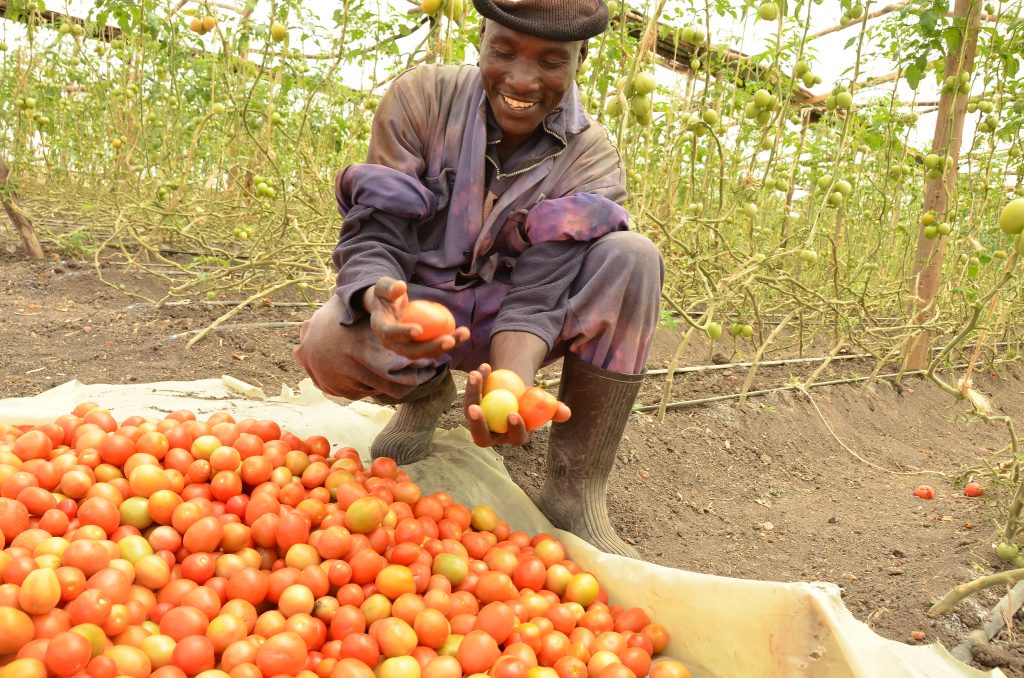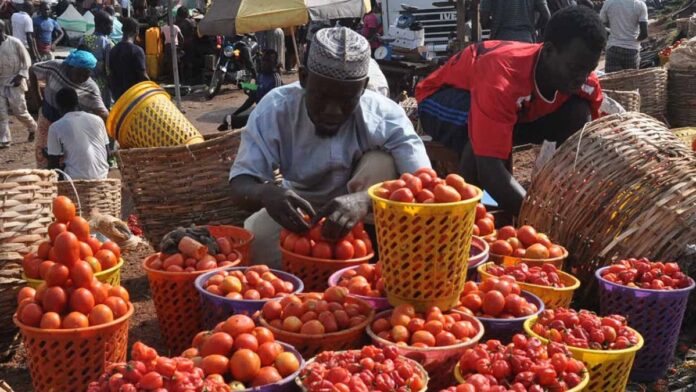Tomato production is most lucrative during the dry seasons. Those are the seasons when most farmers do not produce. With effective irrigation and disease control, your produce is likely to meet the best prices on the market. However, farmers can still make about 65% returns on tomato production during the main seasons when there is likely to be abundance.
Today, we look at how a farmer can still make it in the rainy seasons. First, let us consider the budget and income from production.
Exchange rate source: Oanda
Amount in Ghana Cedis and US Dollars.
Operational Budget/Ha/Yr (2021)
| Activity | Cost(Ghc) | Cost ($) |
| Land rent | 300.00 | 50.24 |
| Land preparation | 600.00 | 100.48 |
| Seeds(100g x 4) | 240.00 | 40.19 |
| Fertilizer & manure | 3,630.00 | 607.88 |
| Agrochemical | 100.00 | 16.75 |
| Labour | 3,500.00 | 586.11 |
| Estimated total cost | 8,370.00 | 1,401.63 |

Yield
Yield varies greatly with cultivar and adherence to good agricultural practices. Yields of up to 35-40 tons/ha are achievable.
Market requirement
The fruit should be firm and free from blemishes or any damage.
Read also: 7 Tips on Profitable Farming with Good Records Keeping
Returns on Tomato Production
Average yield/ha = 40 tons =40,000 kg
Percentage loss of 10%
Available yield = 90/100×40,000 = 36,000kg
Packaging in 36,000kg/52kg = 692.3 boxes
Farm gate price/52 kg box = Ghc20
Income = 692 boxes x Ghc20 = Ghc13,840
Net income = Ghc13,840-Ghc8,370
= Ghc5,470.00 / $916.00
Note: This budget does not include fixed costs and overheads. Farmgate prices are kept at a minimum.
Tips on making high profits in the main seasons of tomato production
- Find a good land at a good location. Land with no history of tomato diseases. That can reduce the cost of production. A good land and fertile land can also reduce cost on fertilizer.
- Adopt no-till agriculture. In the main season one major tip is to reduce cost of production as much as possible. No-till will help reduce cost of land preparation and weed control.
- Know and keep contact with your buyers. You can harvest at the right time when you have someone to buy them.
- Harvest early. This goes hand in hand with point 3.
- Use IPM to control pest. It is very economical and sustainable.


